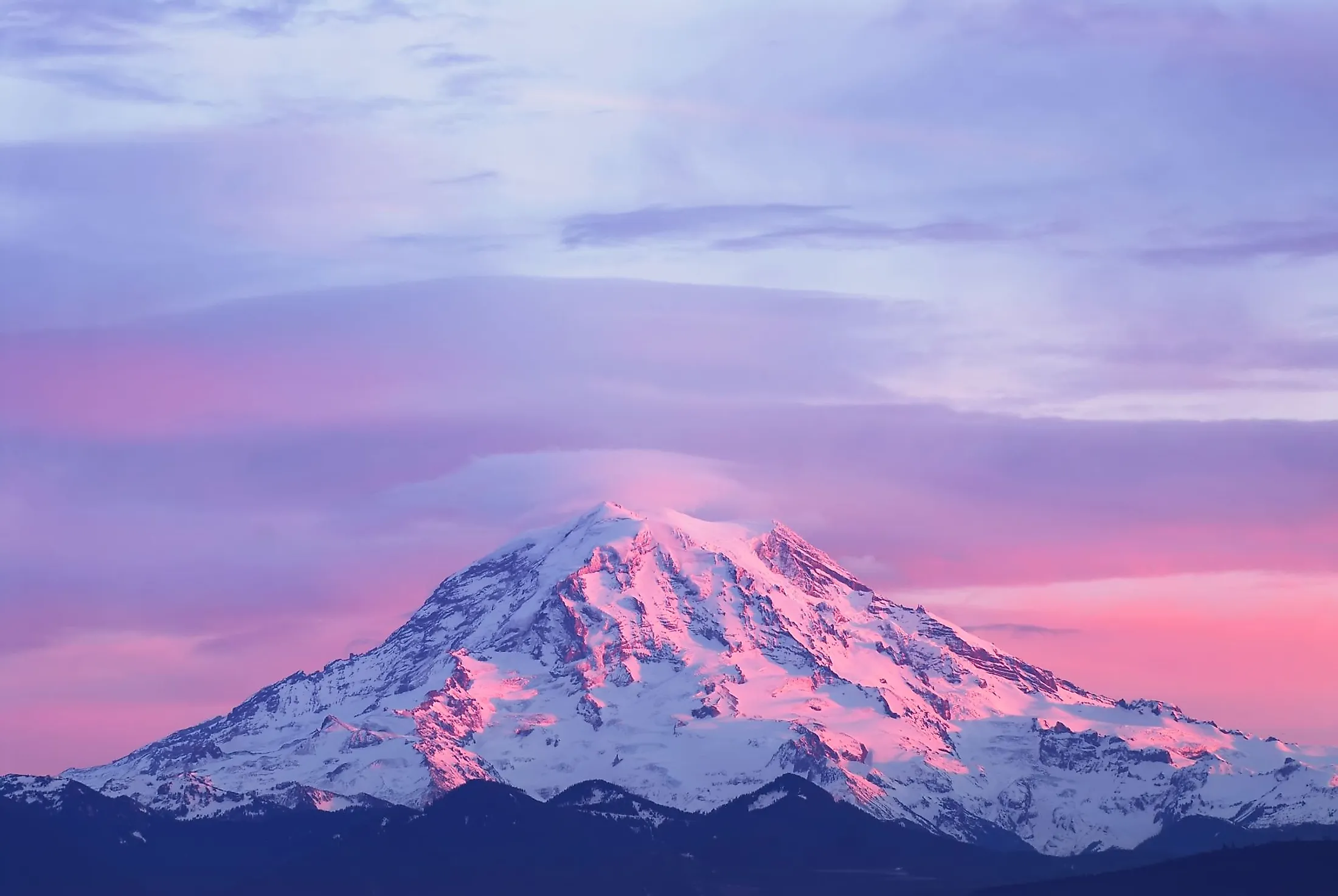
Mount Rainier
Mount Rainier is a 4,392-meter-high mountain that is situated in the Cascades of the Pacific Northwest in Washington, United States. The mountain forms a part of the Mount Rainier National Park and is located in the northeastern part of Lewis County, the southeastern part of Pierce County, and to the southeast of the city of Seattle. The Mount Rainier summit is considered the highest point in the Cascade Volcanic Arc and is surrounded by waterfalls, valleys, old forest growth, and subalpine meadows. In addition to having a massive glacial landscape, Mount Rainier is an active stratovolcano, having recorded some modern volcanic activity particularly between 1820 and 1854. As per the International Association of Volcanology and Chemistry of Earth’s Interior, Mount Rainier have been classified as one of the world’s most dangerous volcanoes. The Mount Rainier National Park offers enticing views of the mountain and nearby glaciers in addition to visitor centers that offer ranger programs, exhibits, and many recreational activities. Mount Rainier also boasts a very diverse ecosystem that houses endemic flora and fauna unique to the area.
Geography
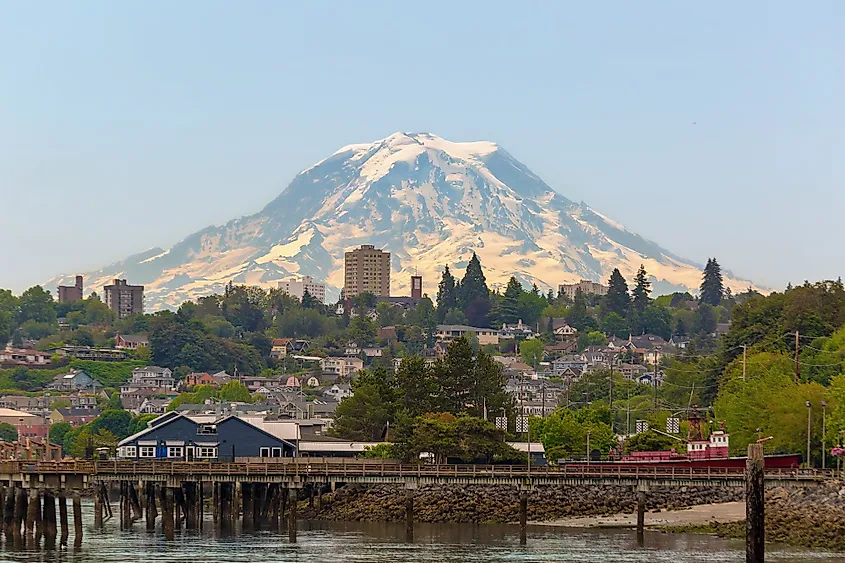
The Mount Rainier peak is located to the east of Eatonville and southeast of Seattle and Tacoma. While Mount Rainier has the highest singular peak in the lower 48 US states, there are three named summits on the mountain, of which Columbia Crest is the highest. It is followed by Point Success which reaches a staggering 4,315-meter, at the southern edge of the summit plateau, located on top of the Success Cleaver ridge. The lowest summit is Liberty Cap having a height of 4,301-meter. In general, the topographic prominence of Mount Rainier is estimated to be 4,020 meters, ranking it third out of the 128 ultra-prominent mountain peaks of the United States. Two volcanic craters are on top of the summit, each having a diameter of more than 300 meters. In addition to being part of the Cascade Range, Mount Rainier forms a trine with Mount St. Helens and Mount Adams. One of the characteristic features of Mount Rainier is the heavy glaciation. The mountain is home to 25 major glaciers, of which Carbon Glacier has the largest glacial volume in the continental U.S. These glaciers also form the headwaters of five major rivers, namely the Carbon, White, Cowlitz, Nisqually, and Puyallup, in addition to more than 100 waterfalls that are found in the National Park.
Geology
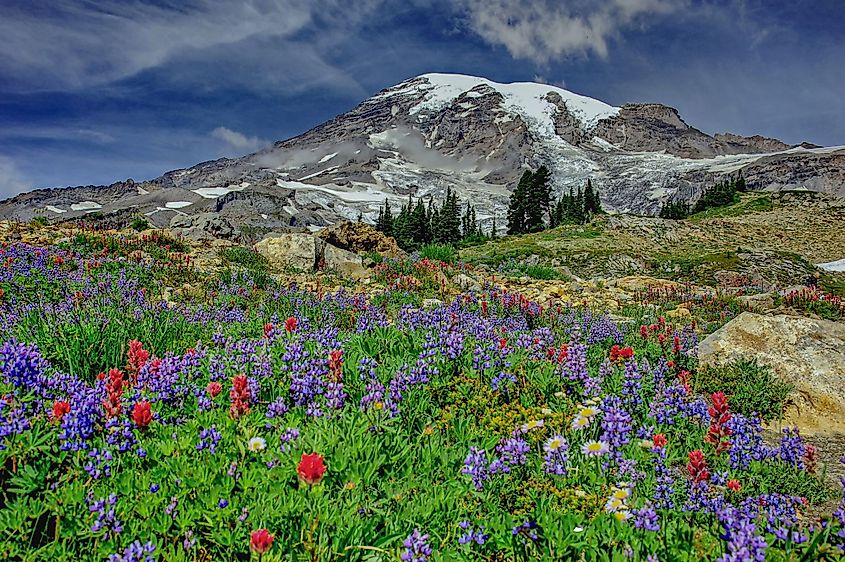
Debris flows, lava flows, and pyroclastic ejecta and flows constitute Mount Rainier. These lavas are estimated to be 840,000 years old, and belongs to the Lily Formation. The current volcanic cone is estimated to be 500,000 years old. However, earlier lavas formed an ancestral cone, also known as “proto-Rainier." Around 5,000 years ago, a massive debris-avalanche caused Osceola Mudlow, which was made of ice and rock, and removed approximately 500 meters of Mount Rainier’s top, decreasing its height to approximately 4,400 meters. Before that, Mount Rainier was believed to be 4,900-meter tall. The glaciated landscape on the slopes of Rainier created some significant erosion and the latter seems to be composed of andesite. The glaciated landscape plays also a significant role in the production of enormous quantities of lahars, which are volcanic mudflows. In the past, these lahars managed to cross 48 kilometers to Puget Sound, and they still pose a threat today to the inhabited area in the vicinity of the mountain. Being an active stratovolcano, Mount Rainier has experienced recent volcanic activity between 1820 and 1854. The mountain is located along the Pacific Ring of Fire, a region around the rim of the Pacific Ocean which experiences earthquakes and volcanic eruptions. While all volcanoes on the rim are dormant, they can resume activity, including Mount Rainier, and scientists have been predicting the latter based on past eruptions. However, the massive amounts of glacial ice on Mount Rainier make any potential eruption very destructive.
History & Etymology
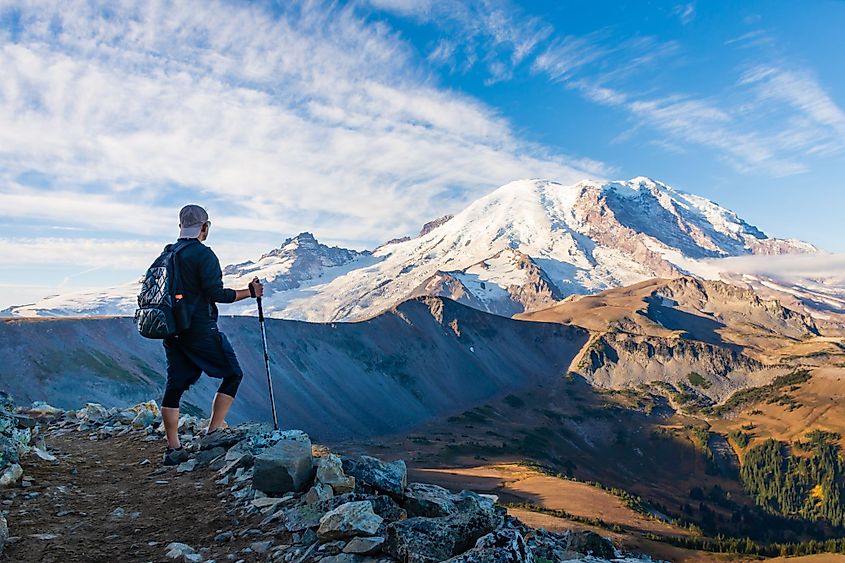
The first European to see Mount Rainier was Captain George Vancouver, a British Royal Navy officer who reached Puget Sound in early May 1792. The mountain was named by Vancouver in memory of his friend Rear Admiral Peter Rainier. The area was originally inhabited by the Pacific Northwest Native American tribes including Cowlitz, Squaxin Island, Nisqually, Yakima, Puyallup, and Muckleshoot. These tribes used the mountain meadows and forests nearby to hunt and gather berries. Archaeological evidence indicating indigenous use of the area dates back to 9,000 years. On March 2, 1899, the Mount Rainier National Park was established by President William McKinley to benefit from the touristic features of the mountain and surrounding area. While Congress dedicated the park for the “enjoyment of the people”, the park was also meant to protect the area’s natural resources from exploitation and spoilage. Today, Mount Rainier National Park boasts several unique attractions and visitor centers, attracting 1.4 annual visitors.
Fauna & Flora
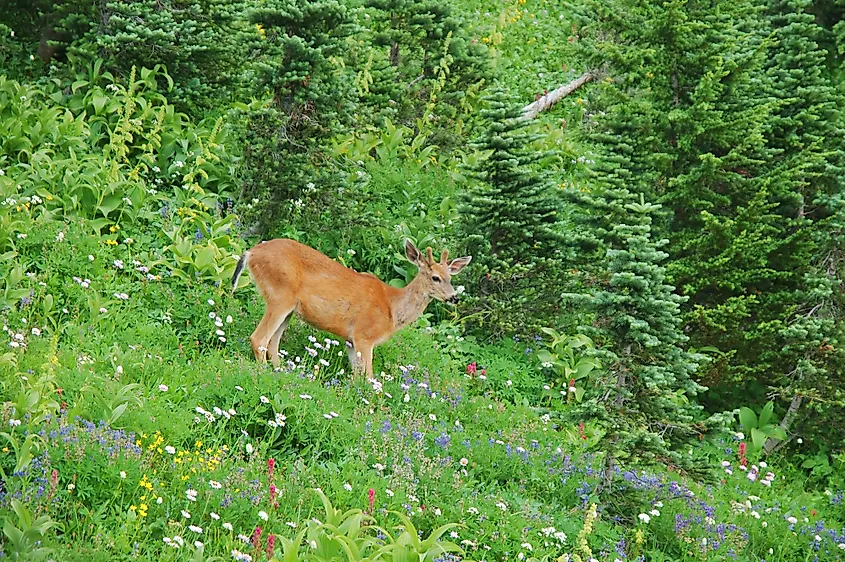
The different climates arising from different elevations on Mount Rainier support very diverse ecosystems. While invertebrates are the most abundant, Mount Rainier is home to 65 mammal species, 5 reptile species, 14 amphibian species, 182 bird species, and 14 native fish species. Commonly seen animals are the Columbian black-tailed deer, noisy Steller’s jays, Douglas squirrels, and common ravens. The Northern Spotted Owl is a species that inhabits the mountain and is protected by federal law. Birds live on different elevations of the mountain and the majority are migratory.The diversity of climates on Mount Rainier also supports a wide variety of vegetation. While the park is renowned for its wildflowers, dramatic blooms are observed in areas such as Paradise, the park’s most visited area. Mount Rainier is home to over 890 vascular species and more than 260 non-vascular plant species and fungi.











